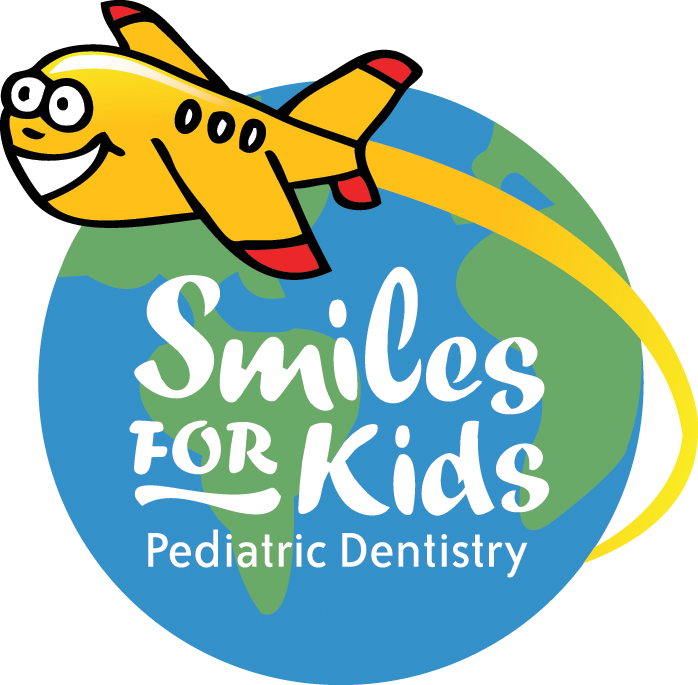Ouch! What to do for a dental emergency?
/Dental trauma is most common in pre-school children that are learning to walk, run, jump and climb, and in school-age children playing sports, but can happen anytime. Our team wants to help your family feel prepared to handle these emergencies.
The most common types of trauma in baby teeth are bumping them in one way or another. Exams and treatment at this age can be difficult due to fear and lack of cooperation. Treatment of these injuries must consider having the least amount of risk to damage permanent teeth developing underneath those little baby teeth. Most heal spontaneously and no treatment at the time of injury may be necessary. In more severe types of these injuries, an extraction of the tooth may be necessary. If a baby tooth is knocked out of the mouth, it is best NOT to re-implant the tooth due to poor healing capability and possible injury to the developing permanent tooth underneath it. Often children have a thick and low positioned frenulum (piece of fleshy tissue) that holds the lip to the gums between the two front teeth and is very vascular. That area bleeds heavily when cut. Gums and lips around those front teeth are also easily bruised and bleed freely. Whenever those front teeth and surrounding soft tissues are injured it is best to call the dentist. Many times we can simply discuss the details on the phone and look at texted photos, which will help us make a decision on whether this is an emergency needing immediate attention (rarely) or something that can be looked at during regular business hours within a day or two. Most of the time, waiting for a little while is perfectly fine, as long as bleeding and pain are controlled. However, you do want to see your dentist soon as an x-ray must be taken to rule out fractures of the bone or roots and to have a baseline image in case of future injury in the area.
Another baby teeth dental emergency is pain connected to an abscessed (infected) tooth. This is usually preceded by large decay or previous treatment such as a large filling or a crown. An abscess usually presents as swelling, pimple on the gum, redness, and pain. This pain cannot be easily controlled and requires treatment with antibiotics and eventual extraction of the baby tooth. It is very important to call your dentist as this infection can spread and have serious consequences. Your dentist will either see your child within a short period of time or call in antibiotics and see you within few days for extraction once the infection is controlled.
The most common type of trauma in the permanent teeth is a crown fracture. This can vary from slightly chipped teeth to fractures of majority of the crown even exposing the nerve of the tooth. We recommend keeping the tooth fragment that broke off as we may be able to bond it back to the tooth. Otherwise, a tooth-colored composite restoration can be done. X-rays of the lip or cheek may also be taken to search for lost tooth fragments. If the nerve is exposed, a pulpotomy may need to be done. Pulpotomy is a procedure where the infected pulp tissue is cleaned, medicine is placed and then the fracture is repaired. Lastly, some fractures could be so severe that the tooth may need to be splinted to nearby teeth for stability and while the bone and supporting ligaments heal. Dentists are much more likely to come in after hours to treat an adult tooth emergency. Infections of permanent teeth need to be seen by a general dentist or a root canal specialist (endodontist) and will be eventually treated with a root canal. Initially we might call in an antibiotic to control the infection. Call your dentist immediately and email or text them photos of the fracture from various angles to determine urgency of the appointment.
If a permanent tooth is knocked out, it’s important to put the tooth back into its socket as quickly as possible. Time is of the essence in these emergencies. The long-term survival of the tooth after 15 minutes outside of the mouth declines quickly. Second best option is to store it in the child’s saliva or in cold milk. Do NOT store the tooth in water or let it stay dry. Call our office immediately so we can splint the teeth together to stabilize the tooth in the socket. In some cases, especially if the tooth is not in a safe storage solution for more than 60 minutes, the long-term survival is poor and a root canal may have to be done. For the best chance of long-term survival, call our office as soon as possible when any dental trauma occurs.

